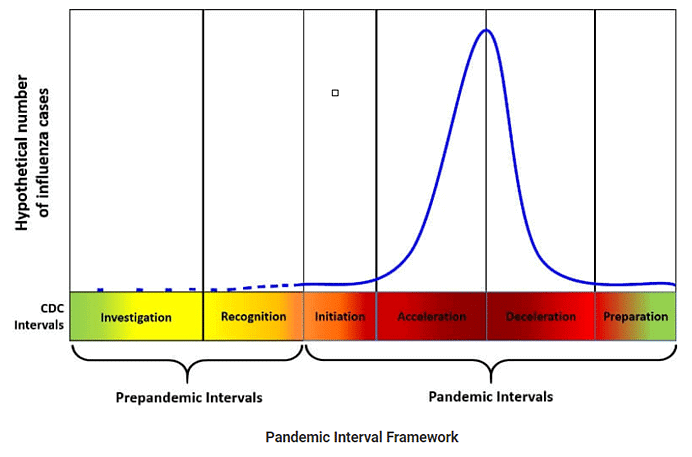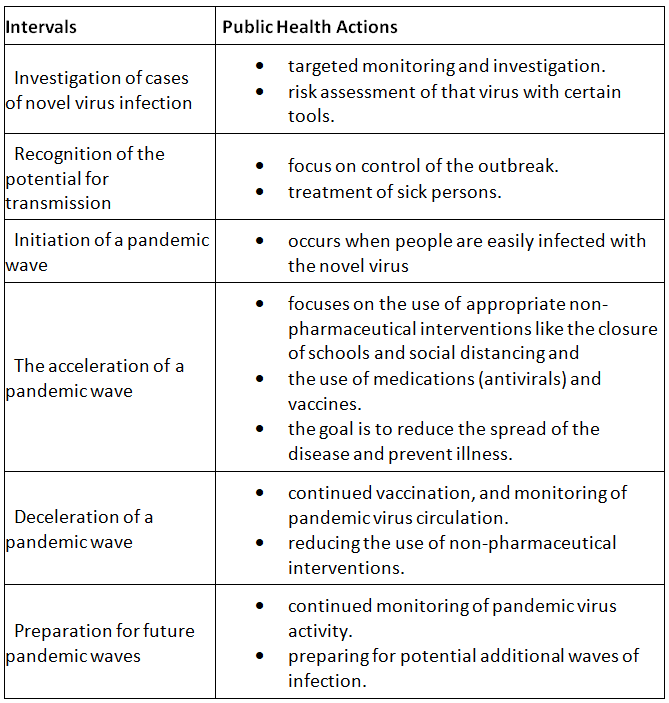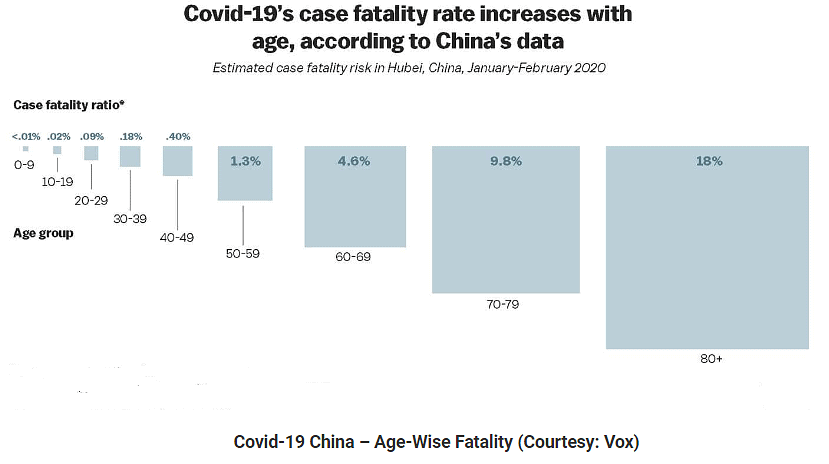Coronavirus (COVID-19): Outbreak, Impact, and Prevention | Science & Technology for UPSC CSE PDF Download
Introduction
- The COVID-19 outbreak in 2019-2020, commonly known as COVID-19, is caused by a new strain of viruses.
- It presents symptoms such as fever, cough, breathing difficulties, pneumonia, and, in severe cases, death.
- The outbreak was first identified in Wuhan, China, in December 2019 and has since become a global pandemic.
What is Coronavirus?
- Coronaviruses are a family of viruses found in animals and birds, sometimes causing severe diseases in humans.
- A new, previously unidentified strain is called a novel coronavirus (nCov).
- COVID-19 is an infectious disease caused by Severe Acute Respiratory Syndrome Coronavirus 2 (SARS-CoV-2).
- The World Health Organization (WHO) declared it a Public Health Emergency of International Concern (PHEIC) and later a pandemic.
- The death rate, although relatively low at 3.7%, demands preventive measures due to its rapid spread.
Novel Coronavirus (COVID-19)
- A newly identified strain of the coronavirus that was previously unknown is termed a novel coronavirus (nCov).
- Coronavirus disease 2019, or COVID-19, is a contagious illness caused by Severe Acute Respiratory Syndrome Coronavirus 2 (SARS-CoV-2), a virus closely related to the SARS virus.
- The official name for the 2019-nCov is COVID-19.
- The World Health Organization (WHO) declared COVID-19 infections to be a global health emergency and later classified it as a pandemic.
- While the novel coronavirus is highly contagious and spreads quickly, the mortality rate is relatively low, at only approximately 3.7%.
- However, due to the potential for a worldwide outbreak, every possible measure should be taken to prevent the rapid spread of the disease. Most individuals recover from COVID-19 within 28 days with appropriate supportive care.
Viruses and Viral Infections
- Viruses are ubiquitous and their origins remain unclear.
- Viruses exist in a state that is neither alive nor dead, often described as existing on the boundary between life and non-life.
- Their structure is relatively uncomplicated, consisting of genetic material (either DNA or RNA) enclosed in a protein shell known as a capsid. Viruses possess genetic material, but they lack the cellular machinery necessary for independent reproduction; thus, they rely on infecting host cells.
- Inside a host cell, viruses assemble and utilize the host cell's machinery to replicate and produce new virus copies.
- When viruses are released from the host cell, it results in the rupture of the cell's membrane and wall, leading to the cell's demise.
- Viruses can be broadly categorized as DNA viruses and RNA viruses based on the type of genetic material they contain.
- In the case of DNA viruses, they enter the host cell's nucleus and utilize the cell's enzymes to duplicate their own DNA.
- RNA viruses, on the other hand, inject their RNA into the cell's cytoplasm (the material inside a cell excluding the nucleus) to create proteins and generate new virus particles. Alternatively, the RNA can be transformed into DNA through a process known as reverse transcription, and this DNA is then integrated into the host's DNA, resembling the replication process of DNA viruses.
Coronavirus Genome
- Coronaviruses have a relatively large RNA genome and belong to the RNA family.
- These viruses are enveloped and carry single-stranded positive-sense RNA. The RNA binds to the ribosomes of the host cell to facilitate translation.
- Positive-sense RNA can act as a messenger RNA, allowing the viral RNA sequence to be directly translated into the necessary viral proteins.
Coronavirus (COVID-19) – Origin and Transmission
- Coronaviruses have their origins in animals such as camels and bats, and they are considered zoonotic diseases, which means they can occasionally jump from animals to humans.
- The source of a zoonotic disease is known as the reservoir species. In the case of SARS, bats were identified as the reservoir species.
- The first documented case of COVID-19 was reported in Wuhan, China, in December 2019, and it was linked to an animal market in the city.
- Research is ongoing to understand the transmission of COVID-19, but according to the World Health Organization (WHO), the disease primarily spreads among humans through exposure to respiratory secretions, which are small droplets containing the virus from the nose or mouth of an infected person, either directly or indirectly.
- The basic reproduction number (R_0) is a metric used to measure the transmissibility of a disease, indicating the average number of people a new case will infect. For COVID-19, WHO estimates an R_0 of 1.4 to 2.5, although some researchers believe this figure may be underestimated.
- Compared to previous outbreaks of SARS and MERS, COVID-19 has exhibited a greater global spread. Researchers suspect that mutations in the virus strain may be making it more efficient in its transmission.
Coronavirus (COVID-19) – Clinical Manifestations
- COVID-19 primarily affects the upper respiratory tract with varying severity.
- Symptoms range from the common cold to pneumonia, gastroenteritis, and neurological issues.
- Incubation period: 2 to 5 days, with symptoms appearing between 3 to 18 days.
Coronavirus (COVID-19) – Prevention and Treatment
- There is currently no vaccine accessible for the prevention of COVID-19.
- Preventing exposure remains the sole method of prevention, and precautionary measures include:
- Refraining from close contact with individuals who are infected.
- Avoiding touching one's eyes, nose, and mouth.
- Staying at home if one is infected and using a face mask.
- Covering one's mouth and nose while coughing or sneezing.
- Regularly disinfecting objects and surfaces that are frequently touched.
- For COVID-19, there is no specific antiviral treatment recommended. Individuals who are infected should receive supportive care tailored to their symptoms, and for severe cases, treatment should focus on supporting the functions of vital organs.
Other Human Coronaviruses
- Two other human coronaviruses, MERS-CoV (Middle East Respiratory Syndrome Coronavirus) and SARS-CoV (Severe Acute Respiratory Syndrome Coronavirus), have been identified in the past.
- Middle East Respiratory Syndrome (MERS): MERS cases were primarily reported in the Arabian Peninsula. Typical symptoms consist of fever, cough, and shortness of breath, which often develop into pneumonia. Approximately 3 to 4 out of every 10 patients diagnosed with MERS have died.
- Severe acute respiratory syndrome (SARS): It is believed that the 2003 SARS epidemic originated when the virus transmitted from small mammals in China. SARS symptoms typically included fever, chills, and body aches, progressing to severe pneumonia and breathing difficulties. SARS is more fatal but less contagious than COVID-19. There have been no SARS outbreaks anywhere in the world since 2003.
Global Impact of Novel Coronavirus COVID-19
A 'Pandemic' refers to an epidemic that has spread globally and is no longer limited to a specific region. COVID-19 is rapidly approaching pandemic status, prompting many countries to implement pandemic-related measures.
Economic Impact
- The emergence of Coronavirus 2019 has significantly disrupted the global supply chain.
- COVID-19 emerged at a time when the Chinese economy was slowing down, and trade tensions and tariffs were escalating.
- China is a major exporter of intermediate manufactured goods, and economies reliant on Chinese imports are facing disruptions. For instance, Wuhan is home to numerous industries, including automotive, hardware, electrical equipment, and consumer products, all of which are vital components of the global supply chain and are currently severed.
- This situation underscores the importance of having a diversified supply chain.
- China contributes approximately 17% of global GDP, and most neighboring countries depend heavily on trade with China. Economies closely tied to China will experience the most significant impact.
- Besides the supply chain, other sectors such as airlines and tourism are directly affected. Global markets have responded negatively, and concerns about a global recession have arisen.
- The SARS pandemic of 2003 caused an estimated $40 billion in global economic losses. COVID-19 is expected to have a more substantial impact, given that China's share of global GDP has quadrupled since then. Some economists estimate annual losses from pandemic risks to be around $500 billion, encompassing both lost income and the inherent cost of increased mortality.
Political Impact
- The COVID-19 outbreak has led to public outrage over initial attempts by Chinese authorities to conceal information.
- Subsequent authoritarian measures to contain the disease, including high-tech surveillance, mass quarantine camps, and lockdowns, have raised questions about balancing citizen freedoms with addressing a national crisis.
- The impact on the reputation of Chinese President Xi Jinping and the Communist Party of China will be assessed based on their crisis management. However, this episode has revealed weaknesses in the top-down Chinese governance model.
Social Impact
- The direct health consequences of COVID-19 can be devastating, with pandemics often having a more severe impact on younger individuals.
- There have been shortages of protective equipment and essential items due to panic buying and hoarding.
- Healthcare infrastructure is strained, and routine healthcare access is compromised.
- Large-scale disease outbreaks can lead to sudden population movements, which can be destabilizing. Migration also increases the risk of disease transmission.
- Infectious disease outbreaks can exacerbate stigmatization of vulnerable social groups and worsen existing social inequalities.
- The rapid spread of rumors and misinformation, facilitated by social media, makes it challenging for people to find reliable guidance.
- Lockdown measures have adverse social effects on individuals and communities.
Public Policy for Handling Pandemics
After the H1N1 influenza pandemic, the Government of India issued 'Clinical Management Protocol and Infection Control Guidelines,' but there is a need for a comprehensive strategy to handle pandemics in India. Responsibilities in this context are divided among the central, state, and local governments.
Case Study 1: Pandemic Interval Framework

U.S. Centers for Disease Control and Prevention (CDC) has developed a Pandemic Interval Framework (PIF) (8) to guide executives on the kind of public health action required at various stages of the progression of a pandemic.
The six intervals and the action to be taken at each interval is summarized below:
Public Health Action at Different Intervals
Case Study 2: How Kerala Handled Nipah Virus Outbreak

The Nipah virus outbreak in Kerala presented a significant challenge due to several key factors. Firstly, it had a history of causing a high fatality rate, with nearly 70% of those affected succumbing to the disease during a prior outbreak in Bangladesh. Secondly, there were no available vaccines or specific treatments for Nipah virus infection. Additionally, Kerala had limited prior experience in managing virus outbreaks.
However, the response to the outbreak was noteworthy in several ways:
- Swift Diagnosis of the Second Case: The fact that the second case was accurately diagnosed underscores the vigilance and competence of the state's medical community.
- Comprehensive Contact Tracing: A diligent effort was made to trace all individuals who had been in contact with confirmed cases. This involved collaboration between medical officials and district administration, resulting in the prompt isolation of potential cases.
- Effective Chain of Transmission Tracing: Every subsequent case could be linked back to the initial case or its close contacts, indicating the success of contact tracing efforts.
- Rigorous Monitoring of Contacts: Approximately 2,000 individuals who had been in contact with confirmed cases were diligently monitored on a daily basis to assess their health status.
- Establishment of Isolation Facilities: Suspected cases were immediately relocated to a dedicated isolation facility at the Government Medical College in Kozhikode.
- Protocols and Training: A structured isolation protocol was put in place, and healthcare personnel received appropriate training and access to necessary safety equipment.
- Comprehensive Care for the Infected: Those infected received anti-viral medications and life support measures, reflecting a comprehensive approach to healthcare.
- Active Supervision: The state health minister played a pivotal role in actively supervising and coordinating these efforts.
Case Study 3: China’s use of technology to manage the spread of COVID-19

The Chinese government, in collaboration with technology firms, has extensively utilized surveillance technology, including:
- Artificial Intelligence (AI) Gene Sequencing Tools: Technology giants like Alibaba and Baidu offer advanced AI tools for gene sequencing.
- Infrared and Facial Recognition Technology: These technologies are employed to identify and screen individuals, particularly travelers.
- AI-Powered Temperature Measurement: Thermal cameras equipped with AI capabilities are used for measuring body temperatures.
- Utilization of Robots and Drones: These are deployed for tasks such as remote disinfection of hospitals, food delivery, and enforcing quarantine measures.
- Alert Apps: There are mobile applications that notify users when they are in proximity to areas with confirmed infections.
- QR Codes: Users of various technology platforms are assigned QR codes based on their identification numbers and travel history. These QR codes provide instructions, indicating whether individuals should be in quarantine or are permitted to travel freely.
Know the difference: Outbreak, Epidemic, and Pandemic
- An outbreak refers to the occurrence of disease cases that exceed the typical or expected number. An epidemic occurs when there is a sudden and significant increase in the reports of a specific disease within a particular region, such as a state or country. When an epidemic extends its reach to multiple countries or even continents, it is classified as a pandemic.
- In the case of the Coronavirus, initially, when it was confined to Wuhan, it was considered an outbreak. As it began to spread within China, it transitioned into an epidemic. Now, with its global spread, it has reached the status of a pandemic.
Conclusion
- India is facing an immediate and significant threat from the spread of COVID-19. To effectively combat this challenge, there is a crucial need for coordination and cooperation among the central, state, and local governments, as demonstrated during the Nipah virus outbreak in Kerala.
- It is imperative to designate key institutions as resource centers and establish them as focal points for critical functions such as contact tracing, testing, communication, and case management. Special attention should be given to implementing screening measures at points of entry into the country. Embracing technology, as seen in China's example, can play a vital role in this fight against the virus, provided it is employed without resorting to authoritarian measures.
- Furthermore, from a long-term perspective, it is essential to develop a thoroughly researched pandemic/epidemic management strategy. This strategy should clearly define the roles and responsibilities of different authorities and outline specific action steps at various stages of an outbreak. Such a comprehensive approach will help India better prepare for and respond to future health crises.
|
90 videos|491 docs|209 tests
|





















